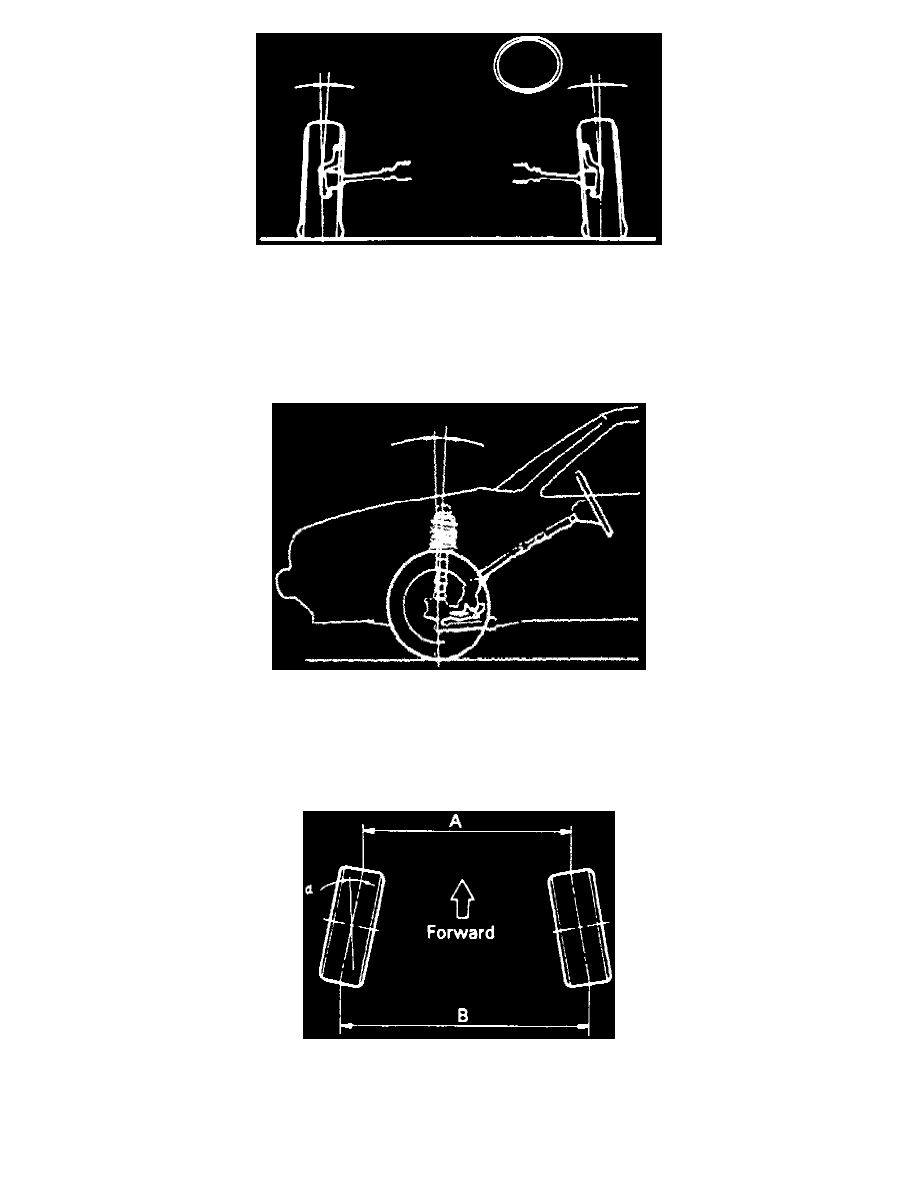Precis L4-1468cc 1.5L SOHC (1993)

Fig. 1 Camber Setting
Camber refers to the angle at which a wheel leans in or out, Fig. 1. Positive camber is when wheel leans outward and negative camber is when wheel
leans inward. Camber on these vehicles is preset to specification and cannot be adjusted. If camber is out of specification, bent or damaged components
must be replaced.
Caster
Fig. 2 Caster Setting
Caster angle refers the to angle at which wheel center deviates from vertical when viewed from side, Fig. 2. Caster is preset to specification and cannot
be adjusted. If caster is out of specification, bent or damaged components must be replaced.
Toe-In
Fig. 3 Toe Setting
As viewed from above, wheels must be set so distances A and B, Fig. 3, measured at wheel rims and at axle height, are different at a given value. If
distance A is smaller than distance B, setting is known as toe-in. If distance A is greater than distance B, setting is known as toe-out. toe setting is given
in inches and refers to difference between A and B. If distances A and B are same, toe setting is 0.
